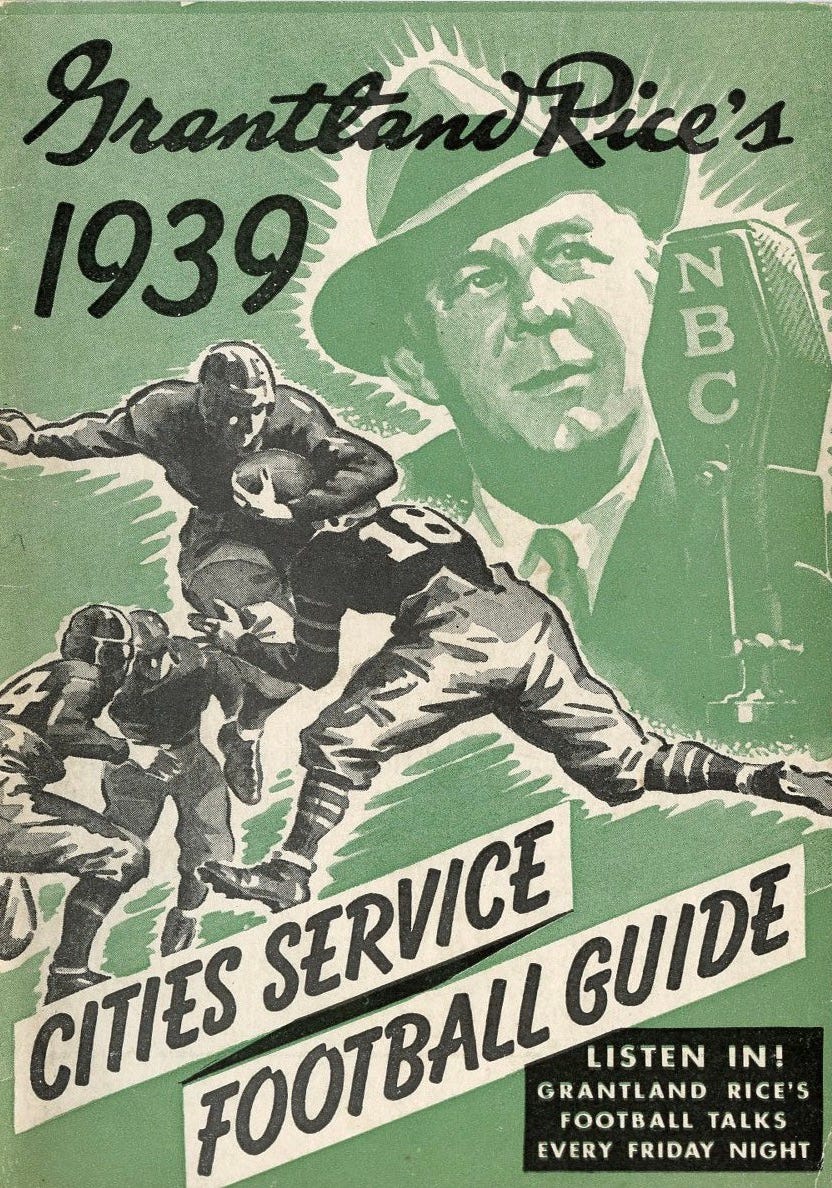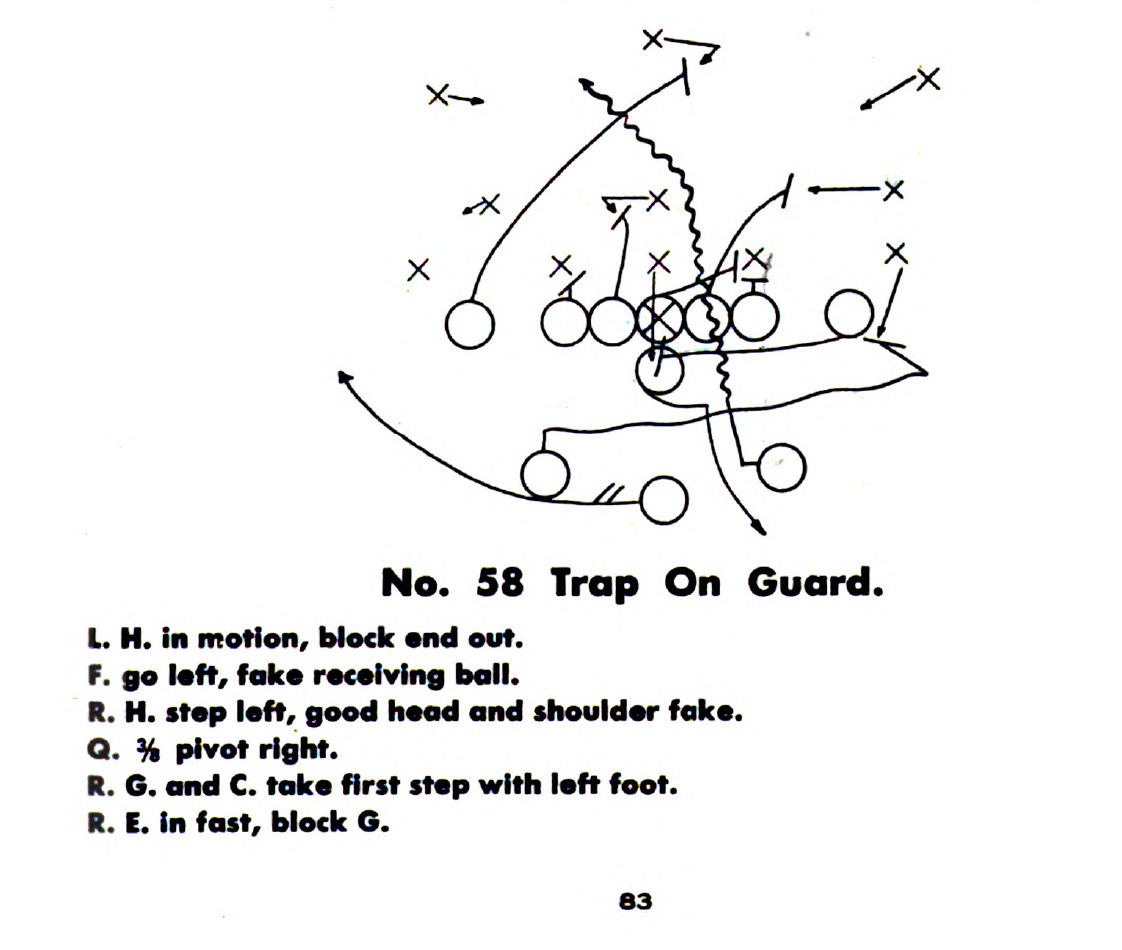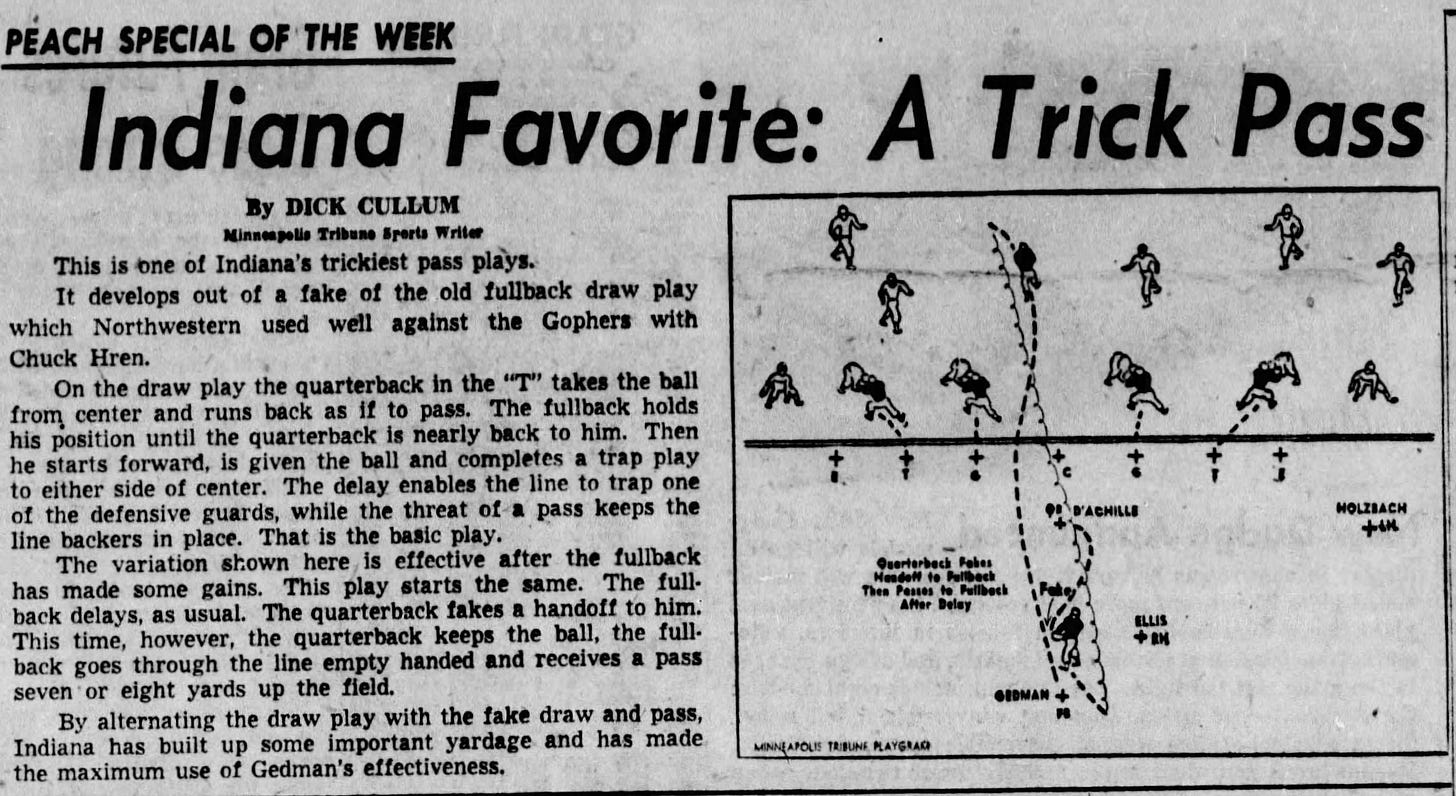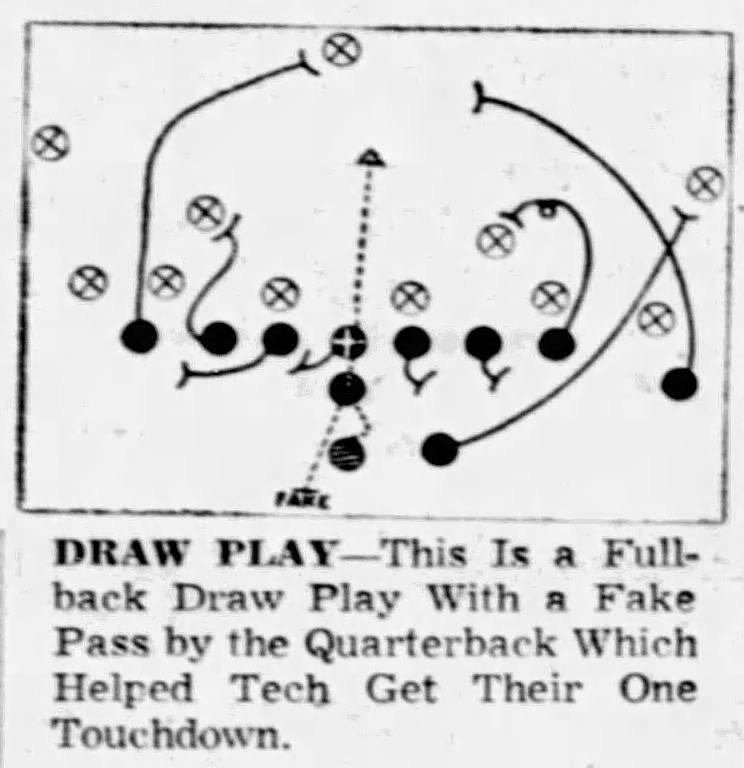Today's Tidbit... The Origins of the Draw Play
Michigan enjoys a long history of deceiving its opponents. For example, when he submitted the play below for the 1939 version of Grantland Rice's Cities Service Football Guide, Fritz Crisler was Michigan's coach. Crisler begins his play description by saying:
Deception has always played a big part in football.
See? What did I tell you?
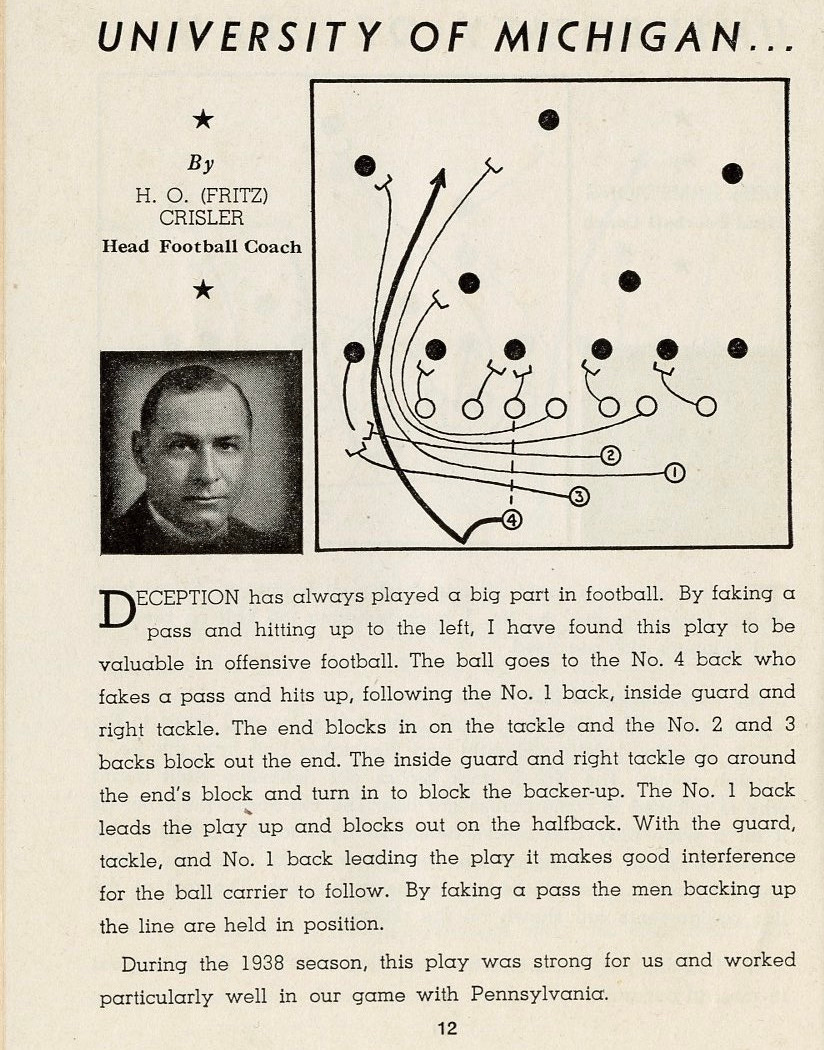
Crisler's play came from the Single Wing and involved the #4 or tailback receiving the deep snap, faking a pass, and sweeping to the weak side behind a guard, tackle, and three backs coming from the strong side. Conceptually, the play is a forerunner of what we now call a QB draw since it emulates a pass play before running with the ball. As we think of them today, draw plays did not enter football until the Modern T arrived in 1940, only one year after Crisler's play appeared in print. Even then, it took most of the decade for the draw play to emerge.
Until the Modern T, quarterbacks often squatted behind or offset from their center, taking a short snap directly from the center's hands or as a short toss. It was not until the Modern T came along that quarterbacks took the snap by placing their hands "under center" and dropping back, as is familiar today. Teams had run “delayed buck” plays since the turn of the century, but not with the dropback motion used in the Modern T.
Like other plays in football's history, the story goes that the first draw play came about by a mistake of sorts. In an early 1940s game between the Chicago Bears and Green Bay Packers, Packers linebacker Buckets Goldenberg spotted a tell or difference in Sid Luckman’s stance on plays he dropped back from center to pass in the Bears T formation. Goldenberg quickly dropped into pass coverage when he saw the tell, and the Bears center, Bulldog Turner, picked up Goldenberg’s tendency. He suggested the Bears fake the dropback and give the ball to fullback Bill Osmanski on a delayed handoff. The play proved successful and is said to be the origin of the draw play.
That version of the draw play's origin story may be true, but a draw play does not appear in Shaughnessy, Halas, and Jones' 1946 book, The Modern "T" Formation with Man-in-Motion. Of the 70 plays illustrated in the book, No. 58 Trap on Guard is the most draw-like. Since many early draw plays included trap blocks on interior defensive linemen, Chicago's draw, if it existed, may have been similar to the trap shown below.
While the draw play's origins remain mysterious, the term "draw play" first appeared in print in January 1950 in articles covering Rice's victory over North Carolina in the Cotton Bowl. With Tobin Rote at quarterback, Rice had success running draws, a play UNC had not seen in the film of the two Rice games they reviewed for scouting purposes.
During the 1950 season, sportswriters began mentioning draw plays and quoting coaches describing the same. Due to it being a new term, writers often defined "draw play" for their readers, and some included drawings to illustrate the play.
The drawing and explanation below appeared in the Minneapolis Star-Tribune under Dick Cullum's byline. I encountered Cullum's writing in the past, especially when writing Hut! Hut! Hike!, which investigated when specific football terms originated or, at least, appeared in print. More than other writers of the era, Cullum focused on the game's technical side and terminology, resulting in him being the first to use "dropback quarterback" (1964) and "skill position" (1966) in print.
The drawing accompanying Cullum's story illustrates a pass to the fullback off the fake draw, a play used after running several successful draws. Cullum mentions that Northwestern used the "old fullback draw play" against Minnesota but references the 1951 Northwestern-Minnesota game when Hren was a senior, so the play was not too old in 1951, despite his description.
Another illustration of the draw appeared the following year with an article about Georgia Tech football and its use of the innovative draw play.
Of course, as the Modern T, Split T, and Wing T replaced the Single Wing in the 1950s, draw plays became more prevalent until football fans reached the point that they forgot that football had been played for 60+ years before the old draw play came along.
Football Archaeology is reader-supported. Click here to buy one of my books or otherwise support the site.


